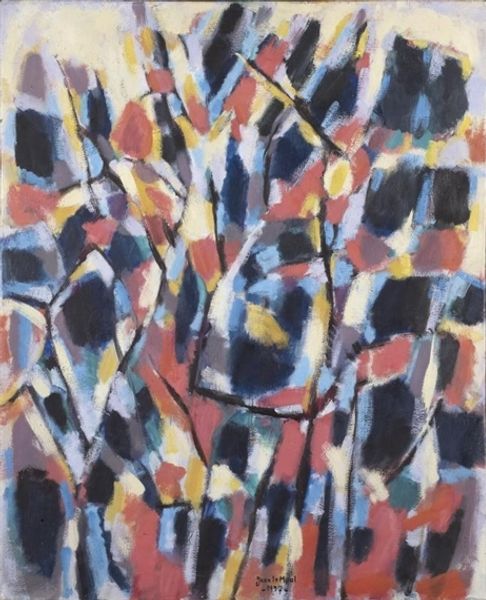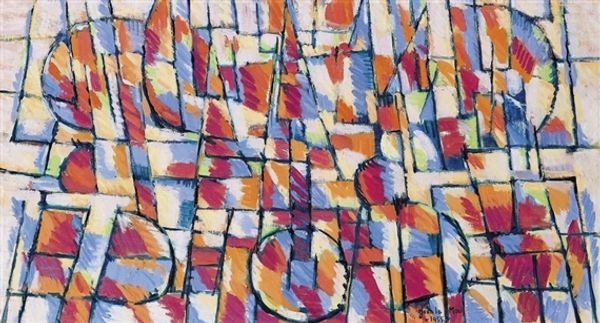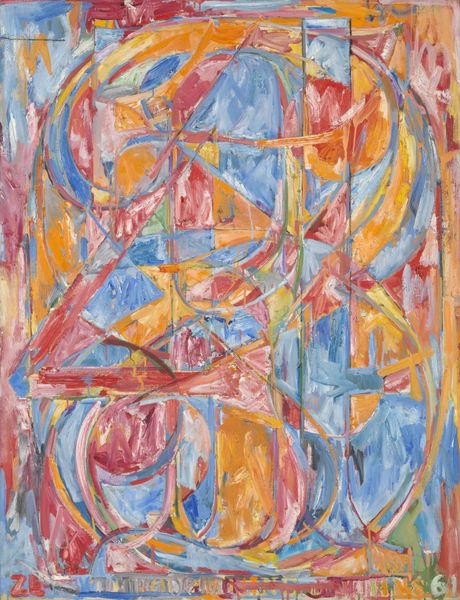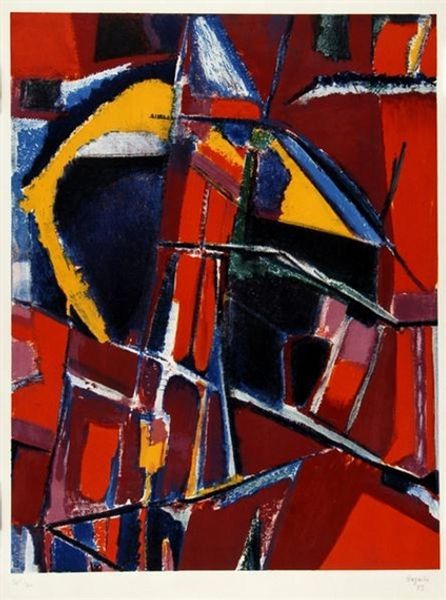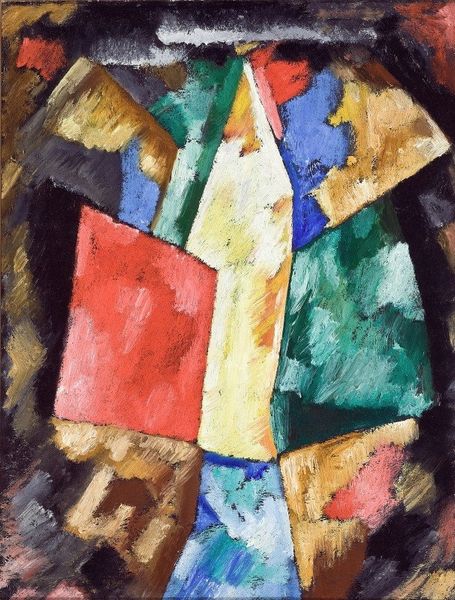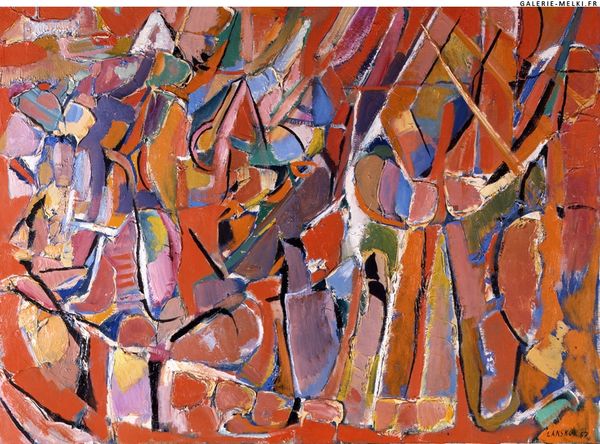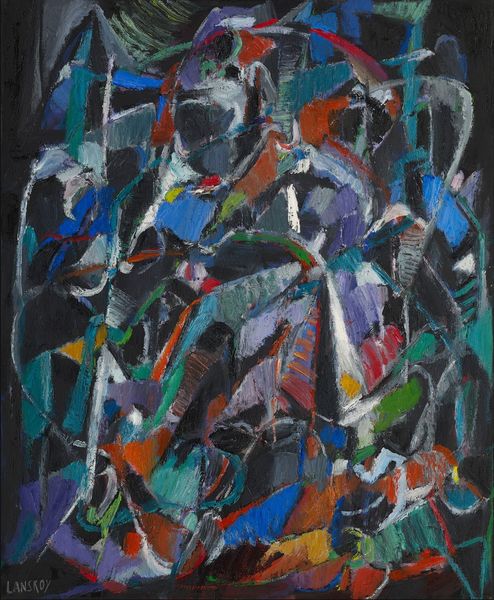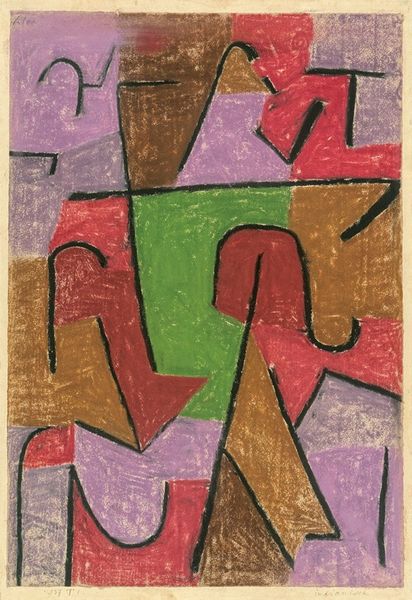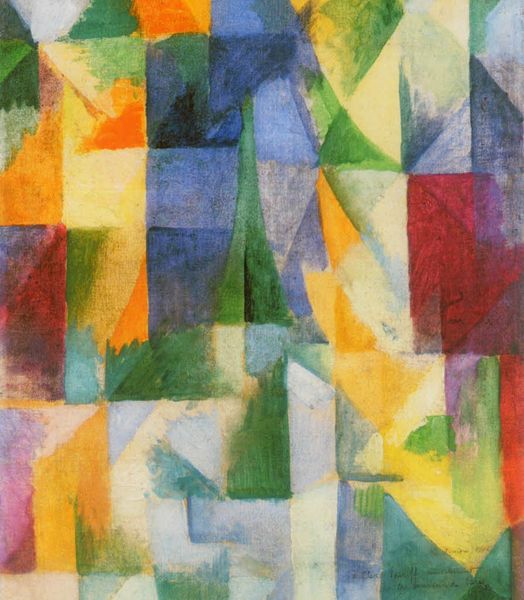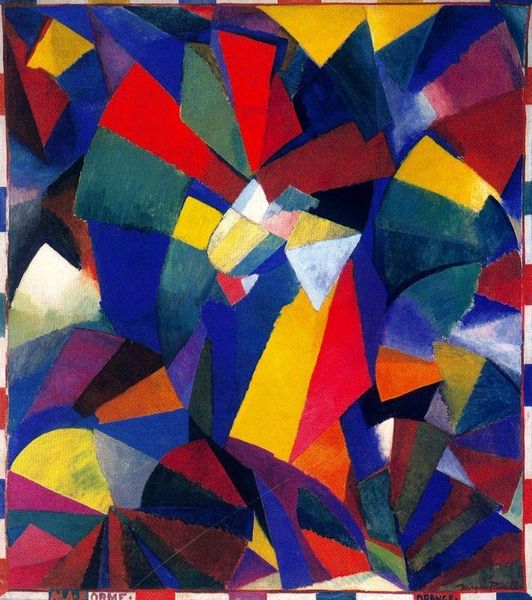
painting, acrylic-paint
#
abstract-expressionism
#
abstract expressionism
#
painting
#
acrylic-paint
#
acrylic on canvas
#
geometric
#
abstraction
#
abstract art
#
modernism
Copyright: Jean Le Moal,Fair Use
Editor: Here we have Jean Le Moal's "Bretagne," painted in 1956 using acrylics. The canvas is filled with geometric forms, mostly blues, reds, and greens, with this linear scaffolding over top. It gives off a playful, almost chaotic, vibe to me. How do you interpret this work? Curator: Considering the sociopolitical climate of post-war France, especially in relation to its regional identities, this abstraction resonates. It’s called "Bretagne," but doesn't depict Breton landscapes literally. Instead, I see an attempt to capture the spirit of Brittany – its cultural resilience, perhaps – through deconstructed forms and colors. Does the composition evoke a sense of fractured identity to you at all? Editor: Fractured identity... I can see that in the way the colours don't quite blend, and the forms seem to almost clash with one another. I hadn't thought of it in that way. Curator: Exactly! Post-war art often grapples with questions of national and regional identity, cultural loss, and the rebuilding of a collective memory. Le Moal may be using abstraction as a visual language to express these complex emotions. Notice also how the "scaffolding" suggests a kind of reconstruction, but the picture plane resists closure. Why do you think that is? Editor: Maybe to represent the constant negotiation and tension between the past and the future, that there isn’t a clean break with what came before. Curator: Precisely. The non-objective language of abstract expressionism allows Le Moal to express sentiments that are often difficult to articulate through more representational forms. It speaks to the idea that regional identities are never monolithic, but rather, complex, fragmented, and perpetually in flux. Editor: This gives me so much to think about. I came in seeing just colours and shapes, now I’m considering its place in the history of post-war identity. Thank you! Curator: My pleasure. Remember to always situate the aesthetic within a relevant history. It always reveals meaning and increases the appreciation for any given piece.
Comments
No comments
Be the first to comment and join the conversation on the ultimate creative platform.

